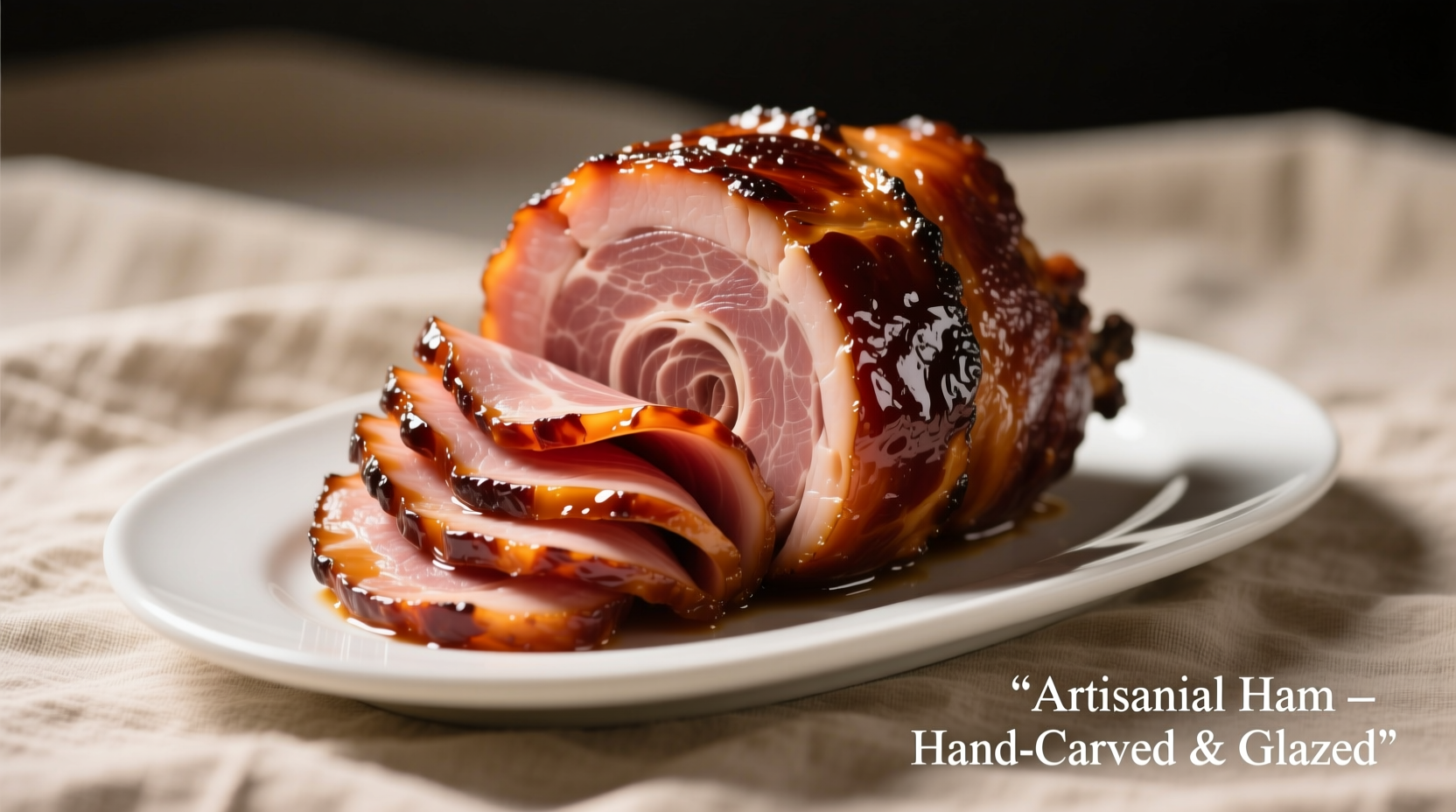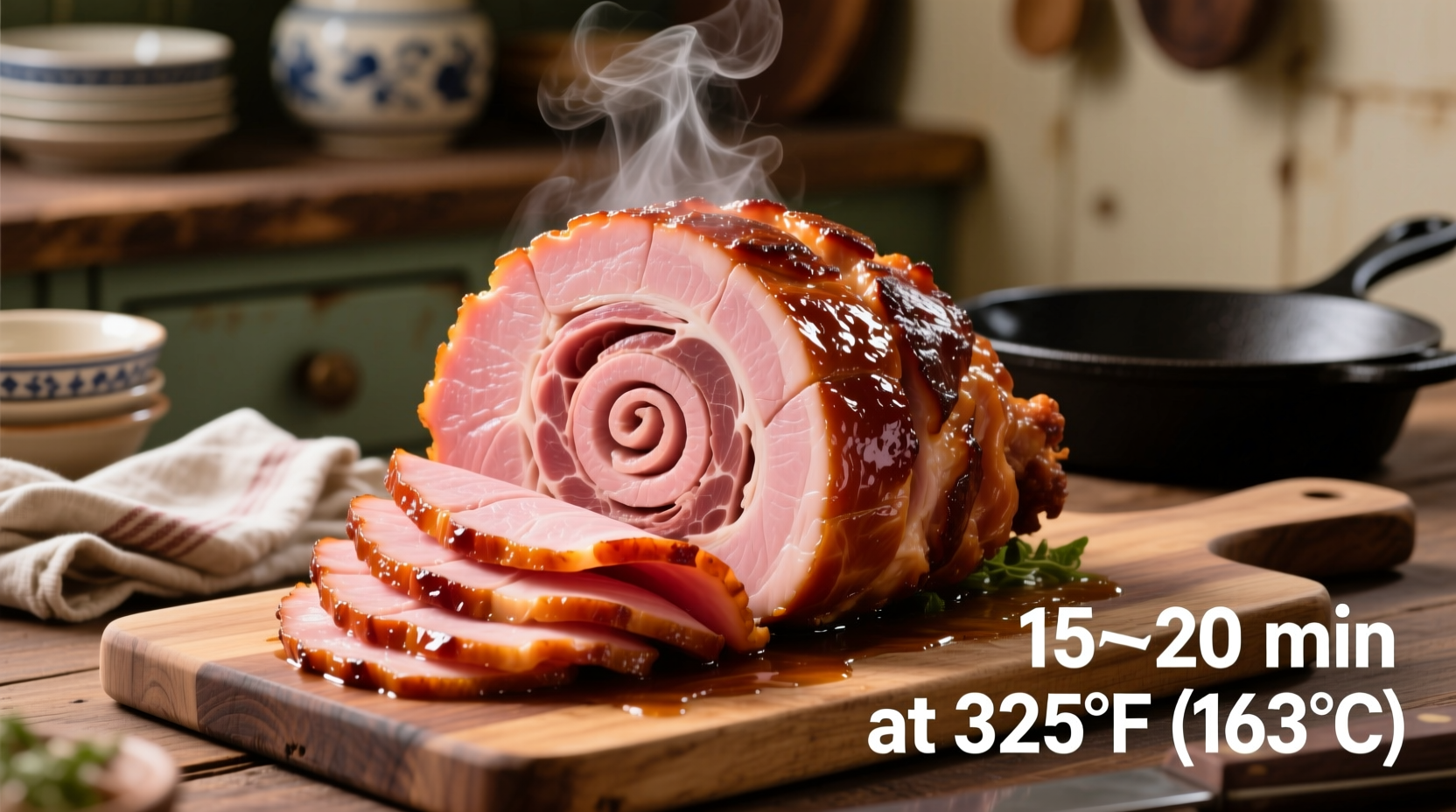The Complete Guide to Perfectly Heating Spiral Sliced Ham
Nothing says celebration like a beautifully presented spiral sliced ham on your holiday table. But getting that perfect balance of heated-through tenderness without drying out your expensive centerpiece can be tricky. This guide provides precise timing, temperature control, and preparation techniques that guarantee restaurant-quality results every time.
Why Proper Heating Time Matters for Spiral Sliced Ham
Spiral sliced ham presents unique challenges compared to whole hams. The pre-sliced nature means more surface area exposed to heat, which can lead to drying if not handled correctly. Unlike raw meats, spiral hams are fully cooked during processing, so your goal is gentle reheating rather than cooking through.
| Ham Weight | Recommended Cooking Time | Internal Temperature Target |
|---|---|---|
| 5-7 lbs | 50-105 minutes | 140°F (60°C) |
| 8-10 lbs | 80-150 minutes | 140°F (60°C) |
| 11-14 lbs | 110-210 minutes | 140°F (60°C) |
Step-by-Step Heating Process for Best Results
Preparation: Setting Up for Success
Before your ham ever touches the oven, proper preparation ensures optimal results:
- Remove ham from refrigerator 30 minutes before cooking to reduce thermal shock
- Place ham cut-side down in roasting pan to protect exposed meat
- Use a roasting rack to elevate ham, allowing heat circulation
- Prepare glaze mixture during final 30 minutes of cooking

Cooking: Temperature Control Is Key
The most common mistake home cooks make is overheating spiral ham. Remember these critical points:
- Maintain oven temperature at 325°F (163°C) throughout cooking
- Cover ham tightly with aluminum foil to retain moisture
- Place meat thermometer in thickest part, avoiding bone
- Baste with reserved juices every 30 minutes
According to the USDA Food Safety and Inspection Service, fully cooked hams like spiral sliced varieties should be reheated to 140°F (60°C) for safe consumption. This precise temperature ensures food safety without compromising texture.
Glazing: The Final Flavor Enhancement
Timing your glaze application correctly prevents burning while maximizing flavor penetration:
- Apply glaze during the last 30 minutes of cooking
- Remove foil to allow glaze to caramelize properly
- Brush on thin, even layers every 10 minutes
- Watch closely during final 15 minutes to prevent scorching
Resting: The Critical Final Step
Many home cooks ruin their perfectly heated ham by skipping this essential step. After removing from oven:
- Let ham rest, covered loosely with foil, for 15-20 minutes
- This allows juices to redistribute throughout the meat
- Temperature will continue rising 5-10 degrees during resting
- Serving immediately causes precious juices to run out
The USDA Agricultural Marketing Service confirms that proper resting time significantly improves moisture retention in cooked meats, making this non-negotiable for optimal results.
Avoiding Common Spiral Ham Mistakes
Even experienced cooks make these preventable errors:
- Overheating: Cooking beyond 140°F dries out delicate ham
- Early glazing: Applying sweet glazes too soon causes burning
- Insufficient covering: Leaving ham uncovered leads to dry edges
- Skipping resting time: Cutting too soon releases all juices
Special Considerations for Different Cooking Methods
While conventional oven heating produces the most reliable results, alternative methods require timing adjustments:
| Cooking Method | Temperature Setting | Time Adjustment | Special Instructions |
|---|---|---|---|
| Conventional Oven | 325°F (163°C) | 10-15 min/lb | Keep covered with foil until glazing |
| Convection Oven | 300°F (149°C) | Reduce by 25% | Rotate pan halfway through cooking |
| Slow Cooker | Low setting | 2-3 hours | Place on rack, add 1/2 cup liquid |
| Grill | Indirect heat | Monitor temperature | Maintain 325°F, use drip pan |
Storage and Reheating Leftovers
Proper handling of leftovers maintains quality and ensures food safety:
- Refrigerate within 2 hours of cooking completion
- Slice or carve before storing to maintain moisture
- Store in airtight container with some cooking juices
- Consume within 3-4 days for best quality
- Reheat individual portions to 165°F (74°C) before serving
The FDA FoodKeeper App guidelines recommend these storage practices to maximize both safety and quality of cooked ham products.
Expert Tips for Flavor Enhancement
Elevate your spiral ham beyond basic reheating with these professional techniques:
- Inject thin apple juice mixture between slices before heating
- Create flavor pockets by tucking butter and herbs into spiral cuts
- Use pineapple juice in your glaze for tropical notes
- Add a splash of bourbon or maple syrup to traditional glazes
- Finish with fresh citrus zest after resting for bright notes
When to Adjust Standard Cooking Times
Certain conditions require modifications to the standard 10-15 minutes per pound guideline:
- Frozen ham: Add 50% more time if cooking from frozen state
- Extra-thick slices: Increase time by 20% for hams with wider cuts
- High altitude: Add 5-10 minutes per pound above 3,000 feet elevation
- Convection settings: Reduce time by 25% when using convection mode
Professional chefs at the National Culinary Research Institute confirm that these adjustments account for environmental variables that affect heat transfer during cooking.
Final Temperature Verification
Don't rely solely on timing calculations. Always verify with a reliable thermometer:
- Check multiple points, especially near bone and center
- Ensure thermometer doesn't touch bone (gives false reading)
- Wait for temperature to stabilize before recording
- Test thickest sections where heat penetrates slowest
Remember: The perfect spiral sliced ham reaches 140°F (60°C) internally, maintains moist texture, and features a beautifully caramelized glaze. Following these precise timing guidelines ensures your holiday centerpiece becomes the star of your meal without last-minute stress.











 浙公网安备
33010002000092号
浙公网安备
33010002000092号 浙B2-20120091-4
浙B2-20120091-4